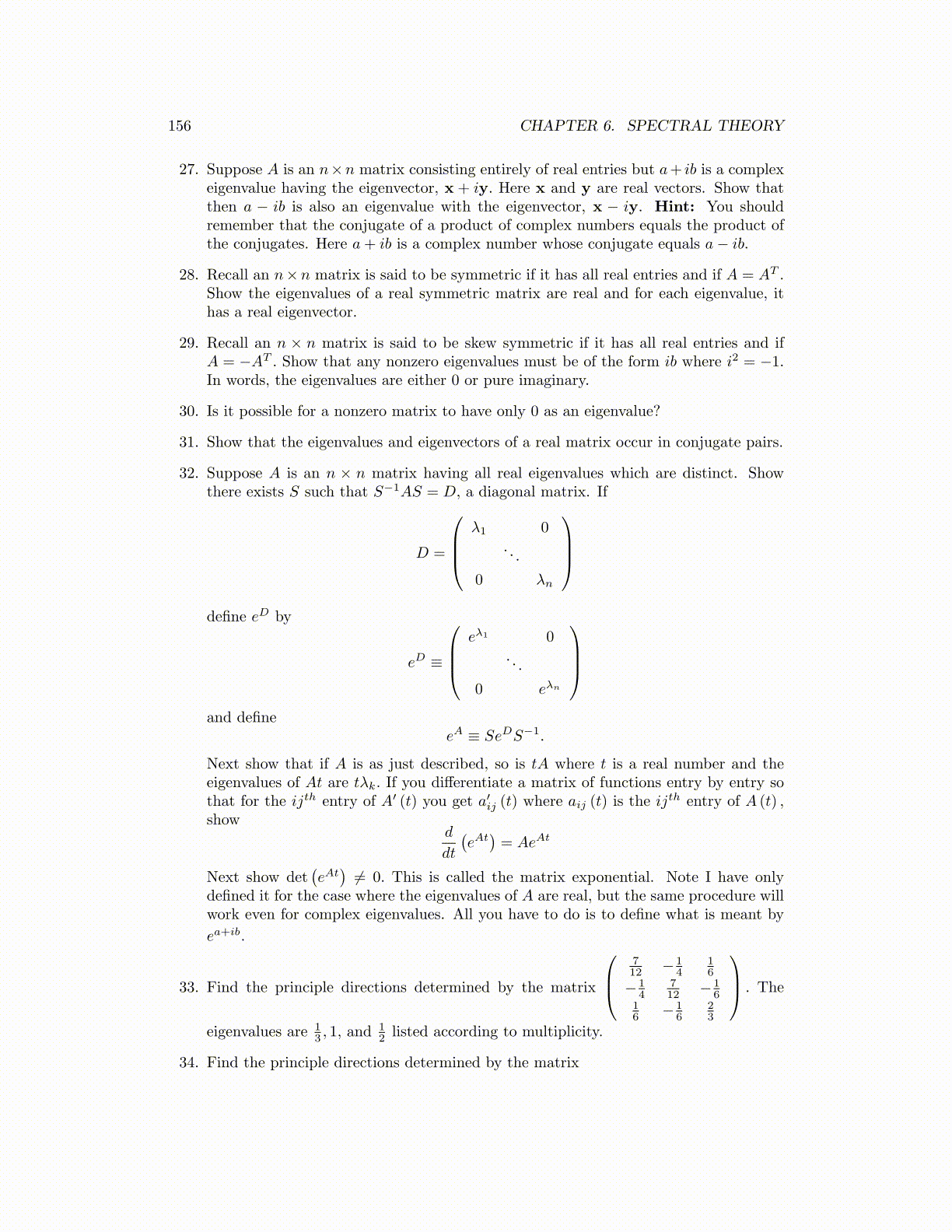
156 CHAPTER 6. SPECTRAL THEORY
27. Suppose A is an n×n matrix consisting entirely of real entries but a+ ib is a complexeigenvalue having the eigenvector, x + iy. Here x and y are real vectors. Show thatthen a − ib is also an eigenvalue with the eigenvector, x − iy. Hint: You shouldremember that the conjugate of a product of complex numbers equals the product ofthe conjugates. Here a+ ib is a complex number whose conjugate equals a− ib.
28. Recall an n×n matrix is said to be symmetric if it has all real entries and if A = AT .Show the eigenvalues of a real symmetric matrix are real and for each eigenvalue, ithas a real eigenvector.
29. Recall an n × n matrix is said to be skew symmetric if it has all real entries and ifA = −AT . Show that any nonzero eigenvalues must be of the form ib where i2 = −1.In words, the eigenvalues are either 0 or pure imaginary.
30. Is it possible for a nonzero matrix to have only 0 as an eigenvalue?
31. Show that the eigenvalues and eigenvectors of a real matrix occur in conjugate pairs.
32. Suppose A is an n × n matrix having all real eigenvalues which are distinct. Showthere exists S such that S−1AS = D, a diagonal matrix. If
D =
λ1 0
. . .
0 λn
define eD by
eD ≡
eλ1 0
. . .
0 eλn
and define
eA ≡ SeDS−1.
Next show that if A is as just described, so is tA where t is a real number and theeigenvalues of At are tλk. If you differentiate a matrix of functions entry by entry sothat for the ijth entry of A′ (t) you get a′ij (t) where aij (t) is the ij
th entry of A (t) ,show
d
dt
(eAt)= AeAt
Next show det(eAt)̸= 0. This is called the matrix exponential. Note I have only
defined it for the case where the eigenvalues of A are real, but the same procedure willwork even for complex eigenvalues. All you have to do is to define what is meant by
ea+ib.
33. Find the principle directions determined by the matrix
712 − 1
416
− 14
712 − 1
616 − 1
623
. The
eigenvalues are 13 , 1, and
12 listed according to multiplicity.
34. Find the principle directions determined by the matrix